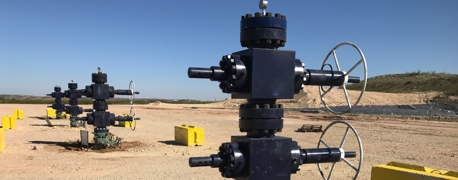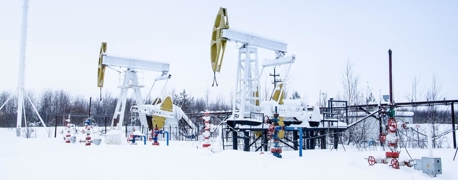Frac Sand Operators: Dangers & Duties of the Job

Frac sand operators are at the forefront of the hydraulic fracturing (fracking) industry, a crucial process for extracting petroleum fluids such as oil and natural gas from shale rock formations. This role, known for its high pay, is particularly prominent in states like New Mexico, where the energy sector thrives. However, the job comes with significant responsibilities and risks that require specialized skills and a deep understanding of the fracking process.
What Does Frac Stand For?
Frac stands for "fracturing," a method used in the oil and gas industry to extract hydrocarbons from underground rock formations. The term is commonly associated with hydraulic fracturing, where a mixture of water, sand, and chemicals is injected into the ground to create fractures in the rock, allowing oil and gas to flow more freely.
What is Frac Sand?
Frac sand is a high-purity quartz sand with very durable and very round grains. It is used as a proppant to keep the fractures open in the shale rock, facilitating the extraction of oil and gas. The unique properties of quartz make it ideal for this purpose, as it is resistant to crushing and can withstand the high pressures found in fracking operations.
Importance of Quartz in Frac Sand
Quartz is the primary component of drac sand, and its unique properties make it indispensable in the hydraulic fracturing (fracking) process. Quartz is vital in frac sand operations due to its:
- Durability and Resistance to Crushing: Quartz is highly durable and resistant to crushing. In the fracking process, sand is subjected to intense pressure as it is injected into shale rock formations. The high strength of quartz ensures that the sand can withstand these pressures without breaking down. This durability is critical because the sand needs to maintain its integrity to effectively prop open the fractures in the rock, allowing oil and gas to flow out.
- High Silica Content: Frac sand is primarily composed of quartz, which is high in silica content. Silica (SiO2) is a naturally occurring mineral found in various forms, with quartz being the most common. The high silica content provides the sand with its strength and roundness, which are crucial for the proppant's performance in fracking operations. The rounded grains of quartz sand allow it to flow more easily into the fractures and keep them open under the pressure of the overlying rock.
- Chemical Stability: Quartz is chemically stable, meaning it does not react with the water or chemicals used in the fracking fluid. This stability is essential because it prevents the degradation of the sand and ensures it continues to function effectively throughout the life of the well. Chemical stability also means that quartz sand does not contaminate the extracted oil or gas with unwanted chemical reactions.
- Size and Shape Consistency: The size and shape of frac sand grains are carefully controlled to maximize their effectiveness in the fracking process. Quartz sand is naturally found in the right size range and can be processed to ensure consistent grain size and shape. Uniformly sized and shaped grains help to create a more stable and permeable proppant pack within the fractures, enhancing the flow of oil and gas.
Role in Hydraulic Fracturing
In hydraulic fracturing, a mixture of water, frac sand, and chemicals is injected into the shale rock at high pressure. Quartz sand plays a critical role in this process. Once the rock is fractured, the sand acts as a proppant, holding the fractures open to allow oil and gas to flow to the wellbore. The use of high-quality quartz sand ensures that the fractures remain open and the maximum amount of oil and gas can be recovered from the well.
Economic & Environmental Considerations
Using high-purity quartz sand in fracking operations can have both economic and environmental benefits. Quartz sand is more cost-effective compared to other proppant materials like resin-coated sands or ceramic proppants. Its abundance and lower cost make it a preferred choice in the industry. The use of quartz sand can reduce the environmental impact of fracking operations. Its chemical stability and durability mean fewer replacements and less contamination of the extraction site, leading to more sustainable fracking practices.
New Mexico’s Quartz Sand Resources
New Mexico is one of the states where frac sand is in high demand due to its rich oil and gas reserves. The state's geological formations provide abundant high-quality quartz sand, making it a critical supplier for fracking operations both locally and nationally. This resource contributes significantly to the state's economy and provides numerous job opportunities in the frac sand industry.
Major Frac Sand Locations & Operations
The frac sand industry is concentrated in several key regions across the United States, each known for its substantial contributions to hydraulic fracturing operations. These areas are rich in high-quality quartz sand deposits, essential for the fracking process.
Proximity to fracking sites is a critical factor for frac sand operations. Being close to the drilling locations reduces transportation costs and ensures timely delivery of sand, which is crucial for the efficiency of fracking operations. This is why many frac sand facilities are located near major oil and gas producing regions, such as the Permian Basin in Texas and New Mexico, the Bakken Formation in North Dakota, and the Marcellus Shale in Pennsylvania.
Several states play an important role in hydraulic fracturing, including:
- Texas: Texas is a powerhouse in the oil and gas industry, and it’s no surprise that it is also a major hub for frac sand operations. The state’s vast reserves of high-purity quartz sand make it a critical supplier for fracking sites. West Texas, in particular, is home to the Permian Basin, one of the most prolific oil-producing regions in the world.
- Wisconsin: Wisconsin is known for its rich deposits of high-quality quartz sand, making it a key player in the frac sand industry. The state’s sandstone formations are ideal for producing frac sand that meets the rigorous specifications required for hydraulic fracturing.
- Minnesota: Minnesota’s southeastern region is home to substantial deposits of high-purity quartz sand, making it a critical supplier of frac sand. The state’s frac sand industry is centered around the Mississippi River Valley, where the unique geological formations provide ideal mining conditions.
- Illinois: Illinois is another important region for frac sand production, particularly in the northern part of the state. The state’s silica sand deposits are among the purest in the country, making them ideal for use in fracking.
- Oklahoma: Oklahoma’s booming oil and gas industry has led to a growing demand for frac sand, and the state has responded with significant production capabilities.
- New Mexico: New Mexico’s role in the frac sand industry is becoming increasingly important, particularly as the state’s oil and gas sector continues to grow. The Permian Basin extends into southeastern New Mexico, making it a key area for fracking operations.
Roles, Duties & Dangers in the Frac Sand Industry
The frac sand industry encompasses various roles, each critical to the successful extraction of oil and gas. These roles come with specific duties and inherent dangers, making it essential for workers to be well-trained and vigilant.
Frac Sand Driver
The duties of a frac sand driver include:
- Transporting Frac Sand: Frac sand drivers are responsible for transporting sand from processing facilities to well sites. This involves driving long distances, often in remote areas.
- Loading and Unloading Sand: They must load and unload sand using specialized equipment, ensuring that the process is efficient and safe.
- Vehicle Maintenance: Regularly inspecting and maintaining the truck to ensure it is in good working condition.
- Safety Protocols: Adhering to safety protocols to prevent accidents and exposure to hazardous materials.
The dangers associated with being a frac sand driver include:
- Long Hours on the Road: The long hours required for transportation can lead to driver fatigue, increasing the risk of accidents.
- Hazardous Material Exposure: Potential exposure to silica dust, which can cause respiratory issues if inhaled over long periods.
- Accidents: The risk of road accidents is significant, particularly when transporting heavy loads over long distances.
Sand Box Driver
A sand box driver's duties include:
- Transporting Sand: Similar to frac sand drivers, sand box drivers transport large containers of sand to and from well sites.
- Handling Heavy Equipment: Operating machinery to load and unload sandboxes.
- Ensuring Secure Transport: Ensuring that sandboxes are securely fastened during transport to prevent spills.
Sand box drivers may be faced with dangers such as:
- Heavy Equipment Handling: Risk of injury from handling heavy machinery and equipment.
- Silica Dust Exposure: Similar to frac sand drivers, exposure to silica dust is a concern.
- Transport Risks: The potential for spills and accidents during transport.
Frac Acid Operator
The duties of a frac acid operator include:
- Handling Chemicals: Managing the chemicals used in the fracking process, including acids and other hazardous materials.
- Injection Monitoring: Monitoring the injection of acid into wells to ensure proper fracturing.
- Safety Compliance: Ensuring compliance with safety regulations to prevent chemical spills and exposure.
The dangers a frac acid operator may face include:
- Chemical Exposure: Risk of burns and respiratory issues from handling hazardous chemicals.
- Equipment Malfunction: Potential for equipment malfunction, leading to dangerous chemical leaks.
Frac Hand
Among a frac hand's duties are:
- General Labor Tasks: Performing a variety of labor-intensive tasks at the fracking site, including operating machinery and monitoring equipment.
- Safety Checks: Conducting safety checks and ensuring all operations comply with safety standards.
- Support Roles: Assisting other operators and ensuring smooth operation of the fracking process.
Frac hands may be exposed to dangers such as:
- Heavy Lifting: Risk of injury from heavy lifting and operating machinery.
- Silica Dust Exposure: Continued exposure to silica dust, which can lead to long-term health issues.
- Accident Risk: High risk of accidents due to the nature of the work and the environment.
Day-to-Day Life of a Frac Operator
The day-to-day life of a frac operator involves long hours, often in challenging conditions. Operators must be prepared for physically demanding work, including handling heavy machinery, performing safety checks, and ensuring the efficient flow of operations. They often work in remote locations, requiring them to be self-reliant and adaptable to varying work environments.
Skills & Equipment Needed for Frac Sand Operators
Frac sand operators must possess specific skills and equipment to perform their jobs effectively:
- Commercial Driver's License (CDL)
- Truck for hauling frac sand
- Familiarity with freight logistics
- Ability to load and unload frac sand quickly
- Knowledge to operate pneumatic trailers
Other Duties of a Frac Sand Operator
Frac sand operators are responsible for various tasks, including:
- Maintaining their vehicle
- Hauling equipment to and from the fields
- Conducting pre/post-trip truck and trailer inspections
- Operating pumps and valves for loading and unloading
- Safely filling tanks using various hoses, nozzles, and fittings
The Future of Frac Sand Operators
Frac sand operators play a vital role in the fracking process, ensuring the efficient extraction of oil and gas. While the job offers high pay and significant opportunities, it may come with substantial risks when employers do not prioritize safety. Companies must implement comprehensive training and safety policies to help prepare frac sand operators for success in this demanding industry, particularly in resource-rich states like New Mexico.


